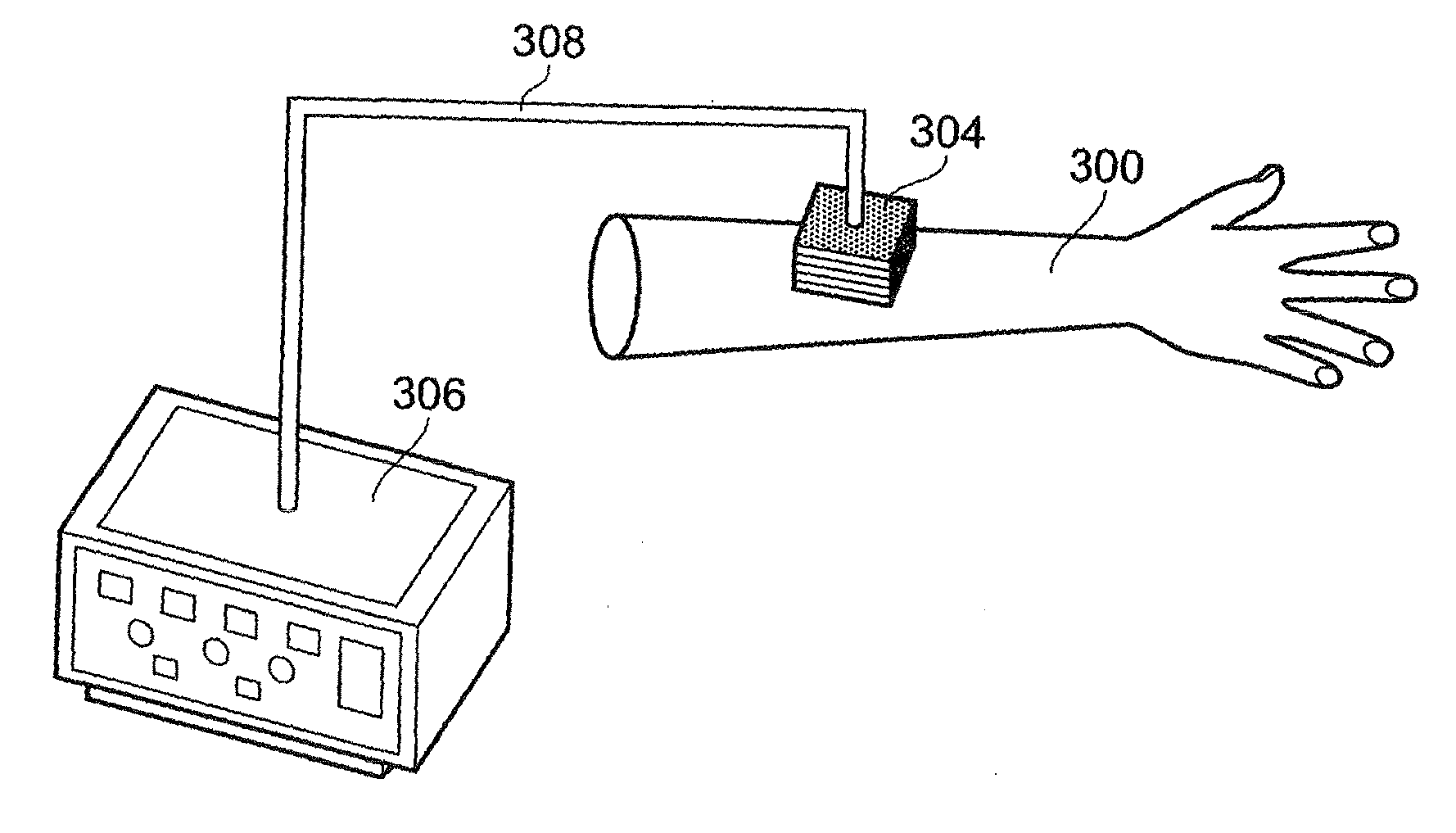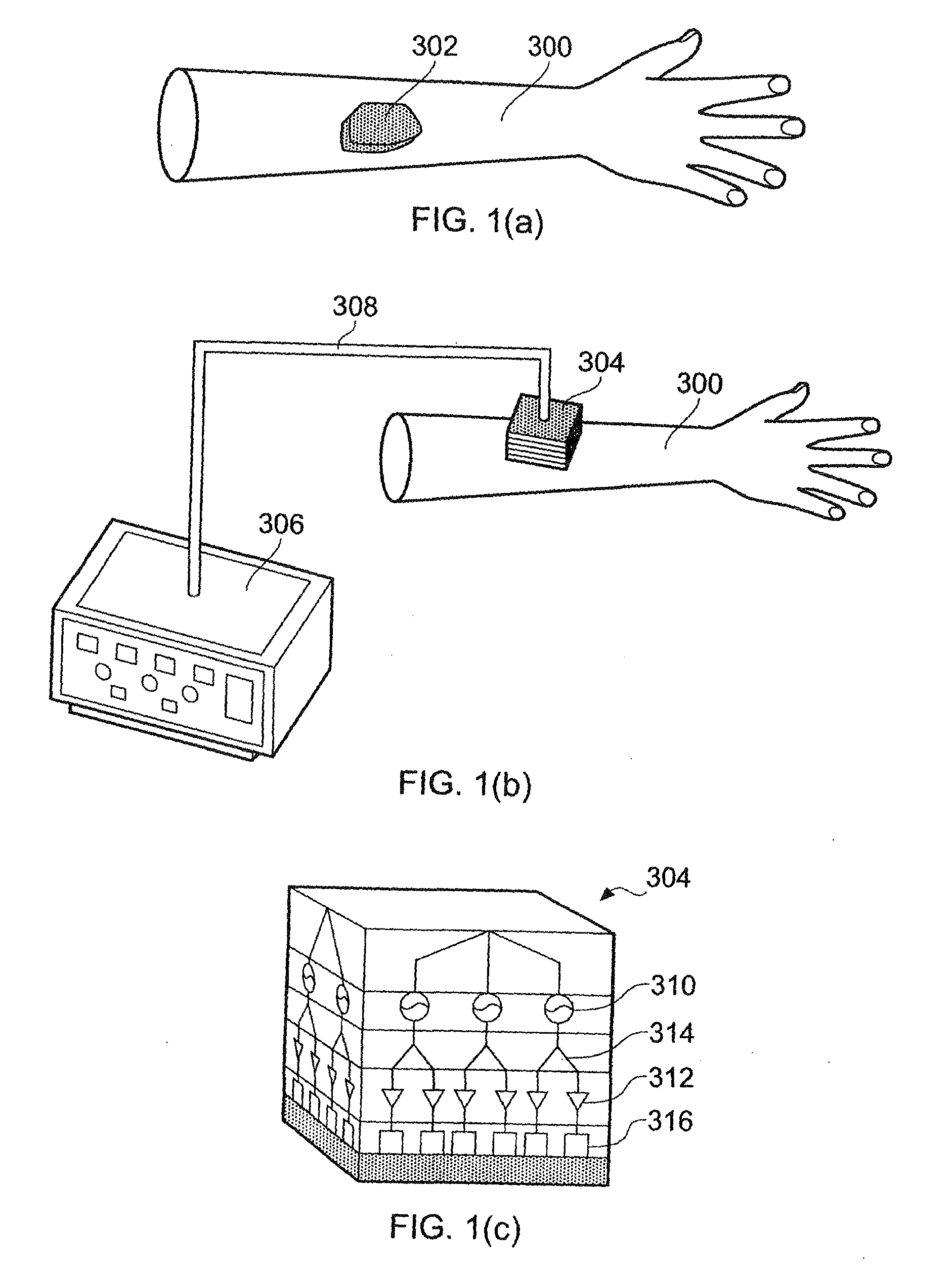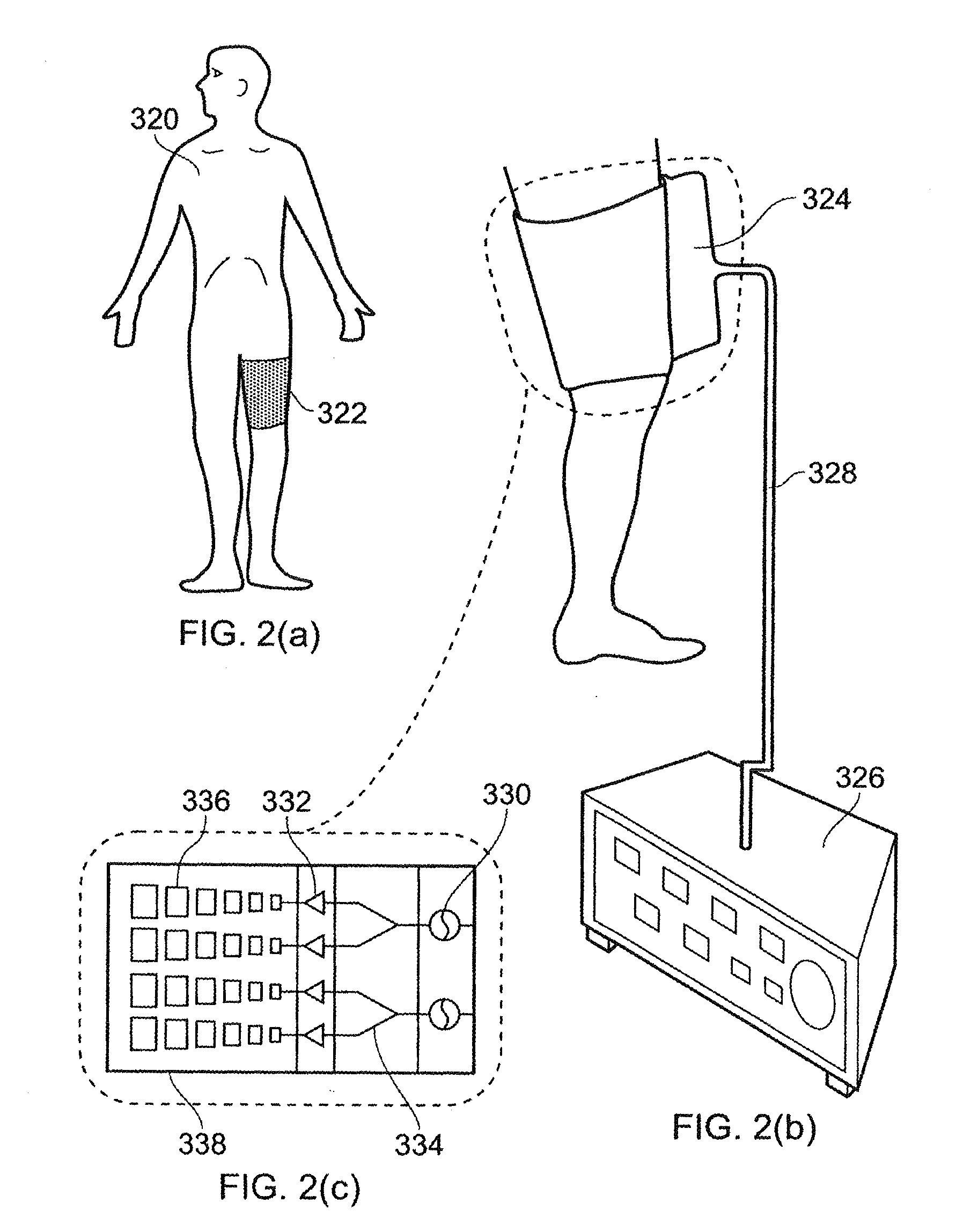Microwave array applicator for hyperthermia
a micro-wave array and hyperthermia technology, applied in the field of micro-wave array applicators for hyperthermia, can solve the problems of inflexible skin treatment systems, limited treatment methods, pain and irritation of patients, etc., and achieve the effect of reducing the amount of bacteria entering and treating relatively large surface areas
- Summary
- Abstract
- Description
- Claims
- Application Information
AI Technical Summary
Benefits of technology
Problems solved by technology
Method used
Image
Examples
Embodiment Construction
Further Options and Preferences
[0103]The general principle of the present invention is the production of electromagnetic radiation with a substantially uniform field from an array of radiating elements. In some of the embodiments described below, patch antennas are used as the radiating elements. Arrays of slotted lines or coplanar waveguide fed suspended patches may also be used. Micromachining technology can be used to fabricate such radiating elements and their feed line structures. A further embodiment provides a radiating structure comprising a bottom layer with a plurality of slots in a ground plane and an arrangement of microstrip lines fabricated onto a dielectric layer such that the radiating microstrip lines are over the slots. The microstrip lines and slots are sized such that energy is radiated from the slots. The operating environment for the patch antenna arrays introduced here is very different from the usual ‘free space’ conditions where such antenna structures are n...
PUM
 Login to View More
Login to View More Abstract
Description
Claims
Application Information
 Login to View More
Login to View More - R&D
- Intellectual Property
- Life Sciences
- Materials
- Tech Scout
- Unparalleled Data Quality
- Higher Quality Content
- 60% Fewer Hallucinations
Browse by: Latest US Patents, China's latest patents, Technical Efficacy Thesaurus, Application Domain, Technology Topic, Popular Technical Reports.
© 2025 PatSnap. All rights reserved.Legal|Privacy policy|Modern Slavery Act Transparency Statement|Sitemap|About US| Contact US: help@patsnap.com



